Themed collection Most downloaded articles of 2017: Analytical Chemistry

Azulene–boronate esters: colorimetric indicators for fluoride in drinking water
Sensitive and selective fluoride indicators consisting of a boronate ester receptor motif, conjugated to an azulene reporter motif, are described. These exhibit a colour change visible to the naked eye when exposed to fluoride.

Chem. Commun., 2017,53, 12580-12583
https://doi.org/10.1039/C7CC07416F
A two-photon fluorescent probe for specific detection of hydrogen sulfide based on a familiar ESIPT fluorophore bearing AIE characteristics
A two-photon fluorescent probe based on an ESIPT fluorophore bearing AIE characteristics was utilized to detect H2S.
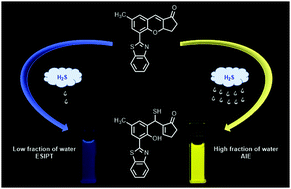
Chem. Commun., 2017,53, 4791-4794
https://doi.org/10.1039/C7CC01695F
A lysosome targetable fluorescent probe for endogenous imaging of hydrogen peroxide in living cells
A lysosome targetable naphthalimide based fluorescent probe has been designed and synthesized for selective imaging of H2O2 in different cells, tissues and in vivo models.
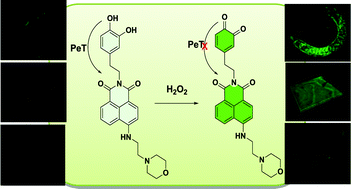
Chem. Commun., 2017,53, 3701-3704
https://doi.org/10.1039/C6CC09127J
A bioorthogonal ‘turn-on’ fluorescent probe for tracking mitochondrial nitroxyl formation
A bioorthogonal mitochondria targeted HNO sensor was applied for the detection of biological concentrations of HNO in vitro in organelles.
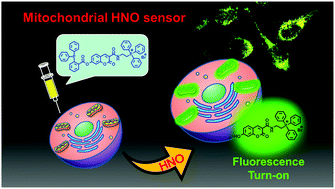
Chem. Commun., 2017,53, 1723-1726
https://doi.org/10.1039/C6CC09082F
Development of a BODIPY-based fluorescent probe for imaging pathological tau aggregates in live cells
As a cell-permeable imaging probe, BD-tau selectively labeled pathological tau aggregates in live neuronal cells.
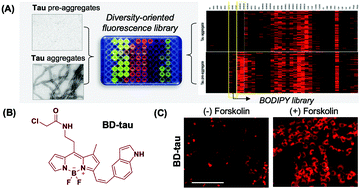
Chem. Commun., 2017,53, 1607-1610
https://doi.org/10.1039/C6CC08826K
A two-channel responsive fluorescent probe with AIE characteristics and its application for selective imaging of superoxide anions in living cells
A red-to-green two-channel responsive and AIE-active fluorescent probe was developed to selectively detect superoxide anions in living cells.
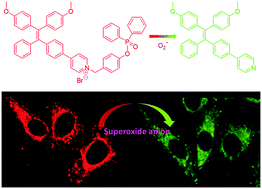
Chem. Commun., 2017,53, 1653-1656
https://doi.org/10.1039/C6CC09307H
A novel aggregation-induced emission platform from 2,3-diphenylbenzo[b]thiophene S,S-dioxide
The steric hindrance and electronic push–pull effect greatly influence the aggregation-induced emission (AIE) properties of 2,3-diphenylbenzo[b]thiophene S,S-dioxide.
![Graphical abstract: A novel aggregation-induced emission platform from 2,3-diphenylbenzo[b]thiophene S,S-dioxide](/en/Image/Get?imageInfo.ImageType=GA&imageInfo.ImageIdentifier.ManuscriptID=C6CC09892D&imageInfo.ImageIdentifier.Year=2017)
Chem. Commun., 2017,53, 1463-1466
https://doi.org/10.1039/C6CC09892D
Development of a reversible fluorescent probe for reactive sulfur species, sulfane sulfur, and its biological application
We developed a reversible fluorescent probe for sulfane sulfur. This probe enabled us to monitor concentration changes of sulfane sulfur.
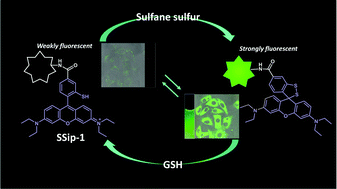
Chem. Commun., 2017,53, 1064-1067
https://doi.org/10.1039/C6CC08372B
An easily accessible aggregation-induced emission probe for lipid droplet-specific imaging and movement tracking
An easily accessible aggregation-induced emission (AIE) probe is developed for LD-specific imaging and dynamic movement tracking with advantages of NIR two-photon excited red emission and fast cell permeability.
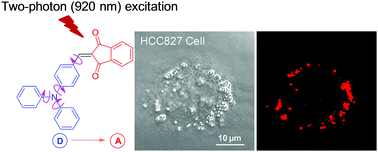
Chem. Commun., 2017,53, 921-924
https://doi.org/10.1039/C6CC09471F
Highlights from Faraday Discussion: aggregation-induced emission
Faraday Discussion 196: aggregation-induced emission brought together around 100 researchers to discuss recent progress, current challenges and potential breakthroughs in the design of new AIE luminogens, the understanding of AIE mechanisms and the exploration of advanced technological applications.

Chem. Commun., 2017,53, 3158-3164
https://doi.org/10.1039/C7CC90086D